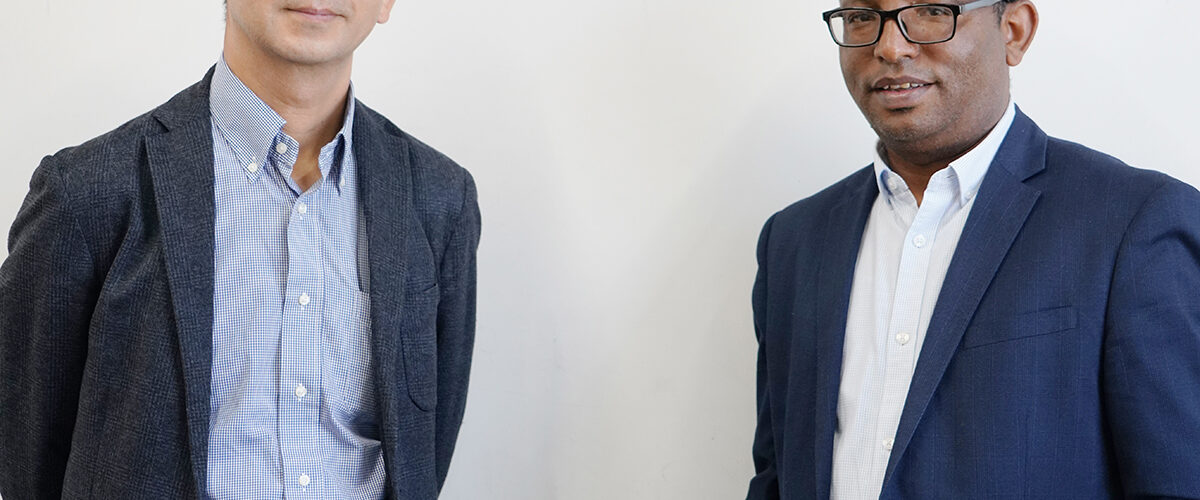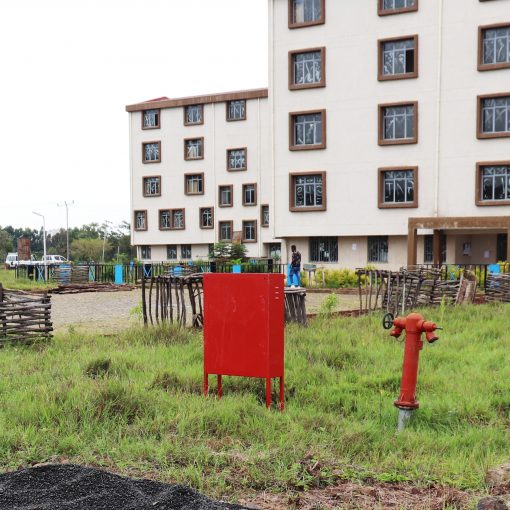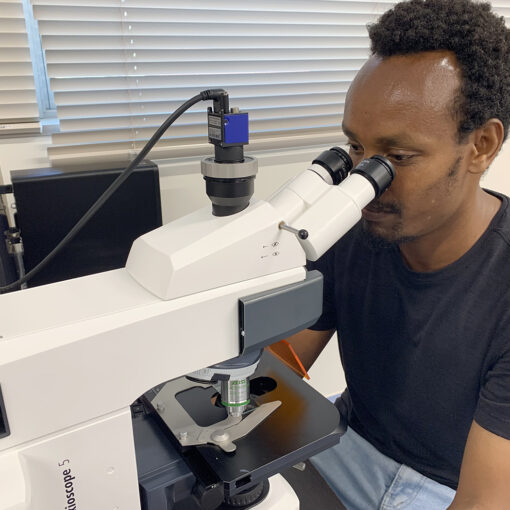2023年度の短期研修で京都に滞在したエチオピア道路公社のWorku Asratie Wubet所長と福林良典先生(宮崎大学)との討論会の様子をお伝えします。司会は重田眞義先生(京都大学)です。
今回は、全三回中の第一回です。
Discussion on road construction in the project model site (Part 1)
WORKU×FUKUBAYASHI [Moderator: SHIGETA]

Dr. Worku, the Director of Road Research Center, Ethiopia Roads Administration (ERA-RRC), and Dr. Fukubayashi, Associate Professor, University of Miyazaki (the leader of Component 3, MNGD project) held a discussion on road maintenance in Ethiopia. The moderator is Prof. Shigeta, a member of the MNGD project.
…
“A Low-Volume Community Road”
———The objective of the MNGD project is to develop a system of maintaining unpaved road using labor-intensive technology and locally available materials. This system will be effective in reducing road disasters in rural areas of Ethiopia with expansive soils. The overall goal of this project is to contribute to connecting all “kebele” (The lower level of administrative units in Ethiopia) to all-weather road that provides affordable and maintainable all-weather road access. It will also contribute toward meeting the needs of rural communities by applying innovative soil stabilizing technology that uses local resources. Today, two of you will discuss about which types of road repair have been conducted in Ethiopia and activities that should be conducted in this project.
FUKUBAYASHI:Welcome to Japan.
WORKU:I thank you all, professors. I am very happy and pleased with the Japanese people represented by the JICA (Japan International Cooperation Agency) in providing such support. This support is very important for us, especially for our community, who are living under a very low level of economy. In this aspect, the motivation for MNGD project is very essential. From this project, I think we can learn a lot in terms of using locally available materials for the construction and maintenance of roads.
A surprising observation to me is your commitment to work in inconvenient environmental conditions in the project site, i.e. Jinka, where facilities are extremely limited. You see, these areas are untouchable for Ethiopian living at the center. Especially Prof. Shigeta and Dr. Kaneko are living there as a research group. You all understand the life of the community and understand their economic status. I think this could be the main motivation to initiate this project.
FUKUBAYASHI:Yeah, I have various experience working in other countries in Africa. When we first come to the road authority, and start to talk about the low-volume road, only a few people find it interesting, but others do not, because they are involved in large-scale projects and busy. They even want to do something equipped-based for the low-volume road in their limited time or resource. Somehow, they show interest but are not fully committed to the low-volume road. You are the director of the research center and may engage several big projects. Yet, you continue to say that our targets, such as a low-volume community road is one of the most important aspects in the topic. So, I really appreciate your comment, and we are also fortunate to see you.
WORKU:I should also say a few points regarding the road infrastructure in Ethiopia. It is well recognized that, despite the government of Ethiopia has been investing a huge resource to develop the road infrastructure of the country over these three decades, the road density and the quality of road infrastructure of the country is still at the lowest level. The poor people continue to suffer from this problem, road access. For this reason, even international programs, especially the development strategies emphasized by the MDGs, focused to ensure road access for people worldwide.
Developing countries have also viewed this issue as their major targets and objectives. The Ethiopian government also has been working since 2010 to provide access to rural community in particular that aims to connect all kebeles through a special Program, referred as Universal Rural Road Access Program (URRAP). Over 100,000 km URAAP road were constructed since the program started. Even these roads not only aim to connect kebeles to kebeles but also with community services such as health centers schools and markets. However, the project was halted for a few years due to a shortage in finance.
The URRAP project is very instrumental, and it is directly connecting people to the markets, health centers, and schools. In my view, we can also integrate efforts of MNGD project to the next phase of the URRAP, i.e., Rural Connectivity for Food Security Program (RCFSP) where the government is initiating. We are hopeful that the program will be commenced very soon. If we try to integrate MNGD project to it, the input of the Japanese people could be reflected.
FUKUBAYASHI:Yes, it is very interesting for me. You are the research center director and note the importance of improving the low-volume road and disseminating this type of new technology.
——— May I ask about the point of distinction between low and high volumes?
FUKUBAYASHI:Yes, volume pertains to the number of traffic. I think 300 vehicles per day?
WORKU:Yes, the number of traffic and type of vehicle.
——— It sounds slightly strange to me, because if the road exists, then the numbers of people and vehicles passing in a day are dependent on other conditions, right? The road itself cannot be identified as low or high volume. This measurement is conditional, isn’t it?
WORKU:Yes, That point is vital. As you said, traffic may be diverted even when the road conditions are improved, and traffic can be diverted to the other direction while new roads are constructed. However, road is categorized as low and high volume depending on the standards of the roads constructed based on the potential traffic volume.
——— I can understand that. It is a kind of descriptive definition of the respective roads.
(Part 2へ続く)








